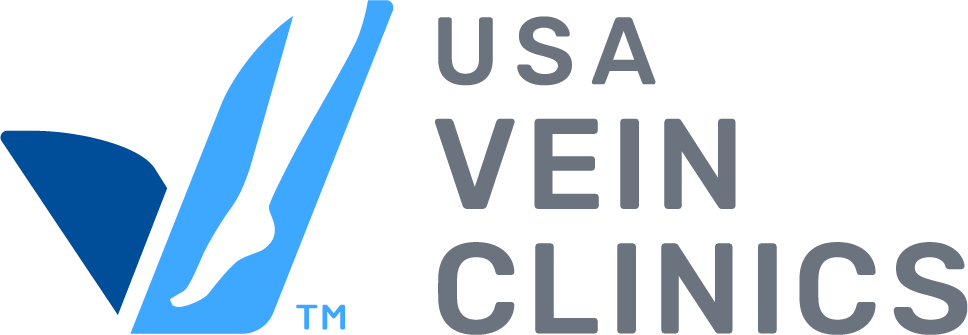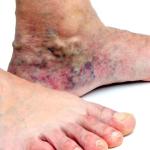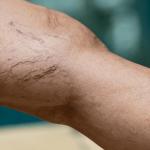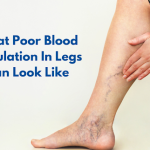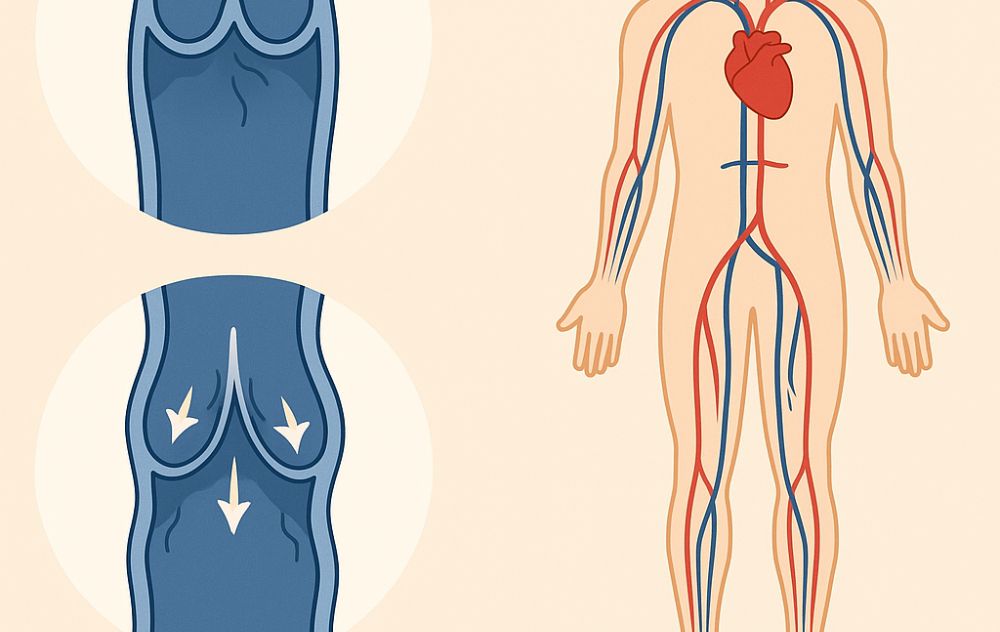
When we think about blood circulation, most of us picture the heart pumping oxygen-rich blood to the body. But there’s another equally vital part of this system that doesn’t get as much attention—venous circulation. This is the pathway your blood takes back to the heart, and when it doesn’t work properly, your body will let you know.
Venous Circulation: Understanding How Blood Flows Back to the Heart
Venous circulation refers to the flow of blood through your veins, returning deoxygenated blood from various parts of the body back to the heart. While arteries handle the high-pressure job of delivering oxygen-rich blood from the heart, veins operate under lower pressure and often work against gravity—especially in your legs.
To help with this uphill battle, your body relies on:
-
One-way valves in the veins to keep blood moving in the right direction
-
Muscle contractions (like walking or flexing your calves) to push blood upward
-
Healthy vein walls that can expand and contract efficiently
Why Is Venous Circulation Important?
Without proper venous return, the body cannot maintain balanced blood flow. Poor venous circulation can result in:
-
Swelling in the legs or ankles
-
Aching or heavy legs, especially at the end of the day
-
Spider veins or varicose veins
-
Increased risk of blood clots or venous ulcers
Over time, if left untreated, these symptoms could lead to a condition called chronic venous insufficiency (CVI), where the veins struggle to return blood efficiently. This can seriously affect quality of life and may require medical attention.
What Can Disrupt Venous Circulation?
Several factors can impair venous circulation, including:
-
Prolonged sitting or standing
-
Obesity
-
Pregnancy
-
Genetics or family history
-
Aging
-
Blood clots or vein damage
When these risk factors are present, it puts extra strain on your veins, which may weaken the valves or cause them to malfunction.
Leg Pain from Poor Circulation
One of the earliest and most common signs of a venous issue is leg pain from poor circulation. This can feel like aching, heaviness, or throbbing in the calves—especially after standing or sitting for long periods. Some people describe it as feeling like their legs are weighed down or “tight.”
The pain may be mild at first but can worsen over time. In some cases, you might also notice your legs swelling by the end of the day, your shoes feeling tighter, or your skin becoming discolored. These symptoms are your body’s way of telling you something isn’t right with your circulation—and it’s worth paying attention to.
Chronic Venous Insufficiency Symptoms
When venous circulation is impaired for a prolonged period, it may lead to chronic venous insufficiency (CVI). This condition happens when the valves in your veins weaken or become damaged, allowing blood to flow backward and pool in the legs.
Common symptoms of chronic venous insufficiency include:
-
Persistent swelling in the lower legs or ankles
-
Aching, throbbing, or cramping pain
-
Itchy or flaky skin on the legs
-
Skin discoloration near the ankles
-
Bulging varicose veins
-
A feeling of heaviness or fatigue in the legs
-
Open sores or ulcers (in severe cases)
CVI often worsens over time if left untreated. Recognizing the signs early and seeking medical care can help you avoid complications and improve your quality of life.
How Can You Support Healthy Venous Circulation?
Taking care of your vein health is important for your overall circulation and mobility. Here are a few ways to help:
-
Stay active – even short walks throughout the day can help
-
Elevate your legs when resting
-
Wear compression stockings if recommended by your doctor
-
Maintain a healthy weight
-
Avoid sitting or standing too long without moving
When to Seek Help
If you’re experiencing ongoing leg swelling, pain, visible varicose veins, or skin changes near the ankles, don’t ignore the signs. A vein specialist can evaluate your circulation and determine if there’s an underlying condition like CVI or deep vein thrombosis (DVT) that needs treatment.
